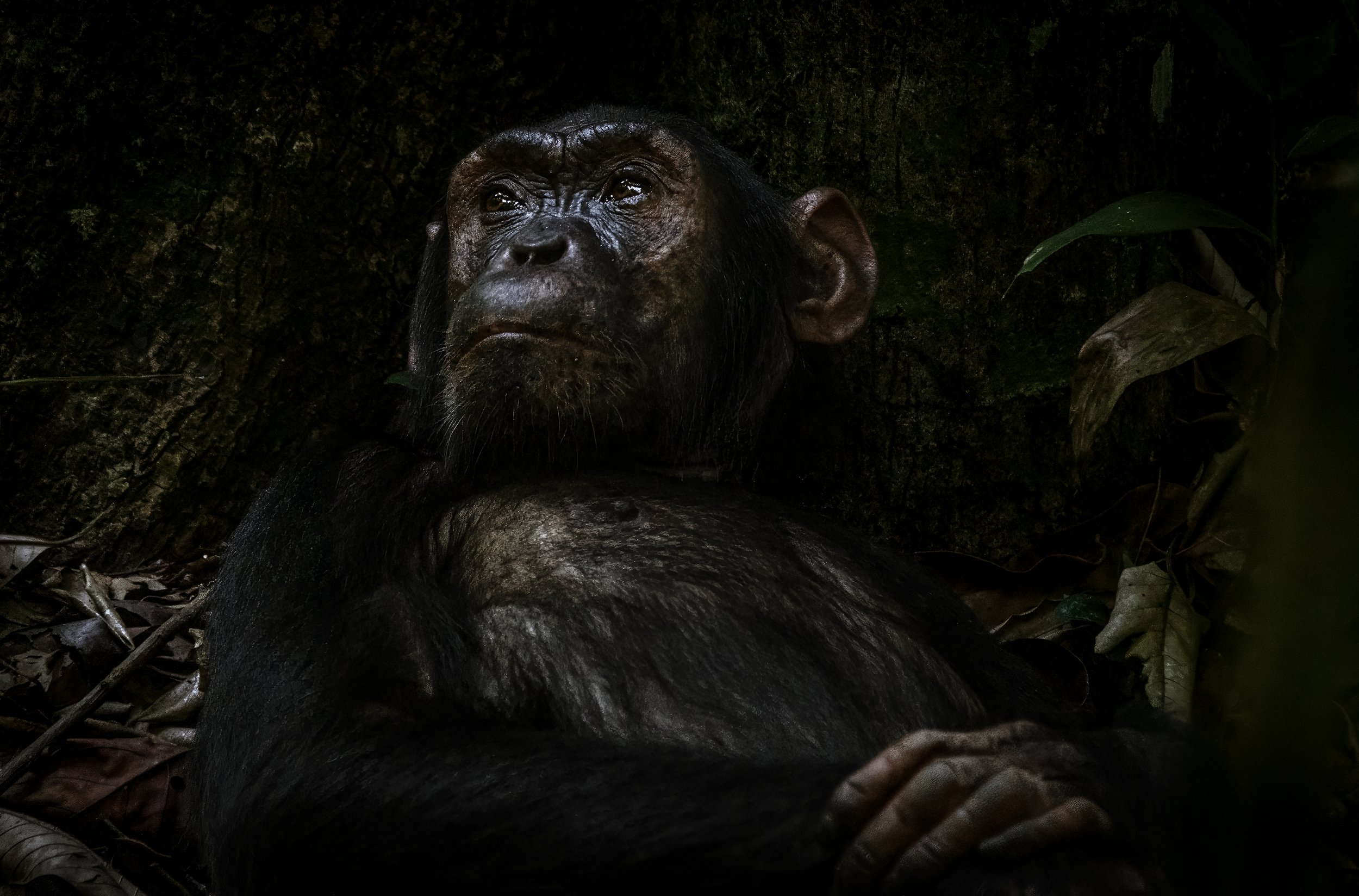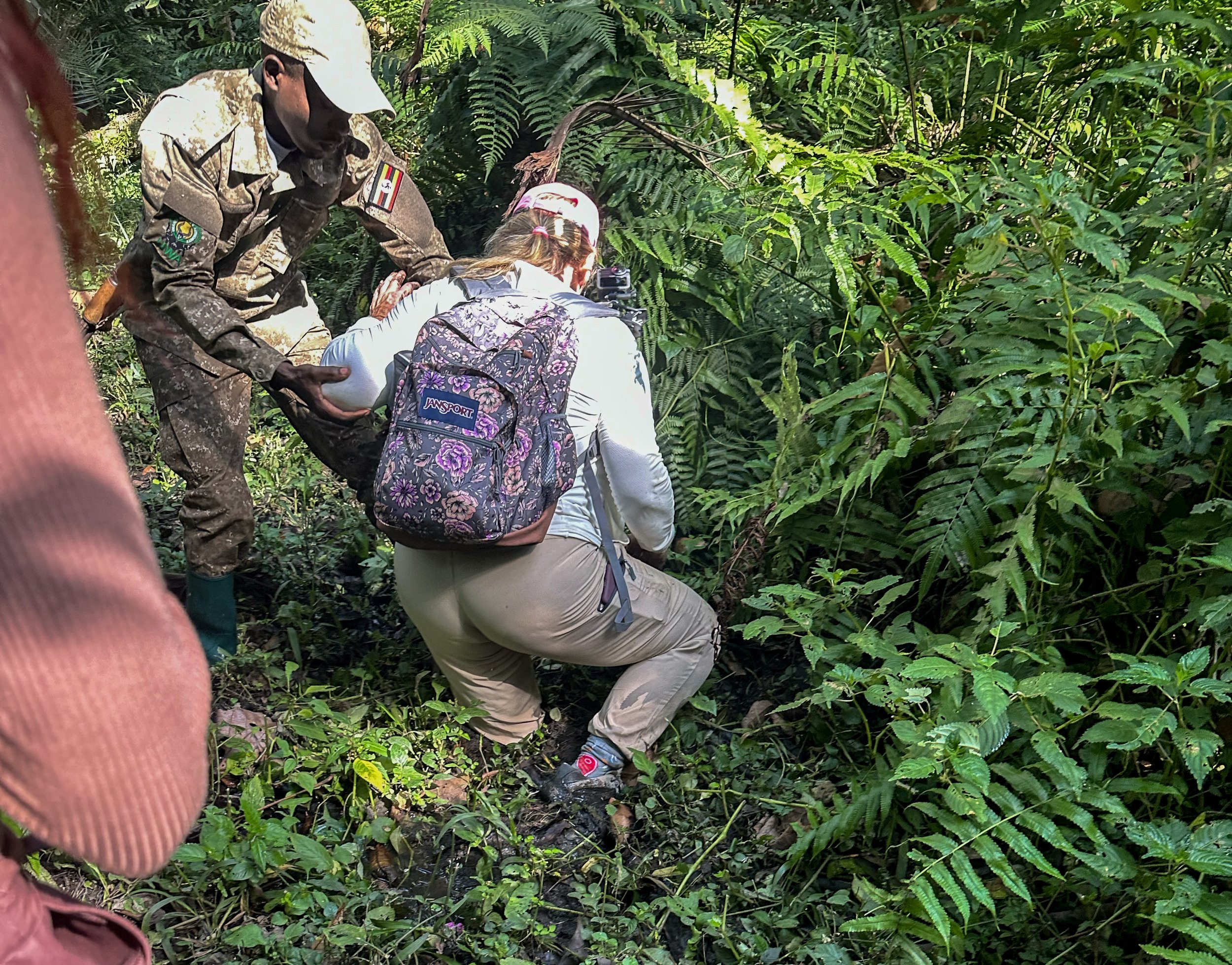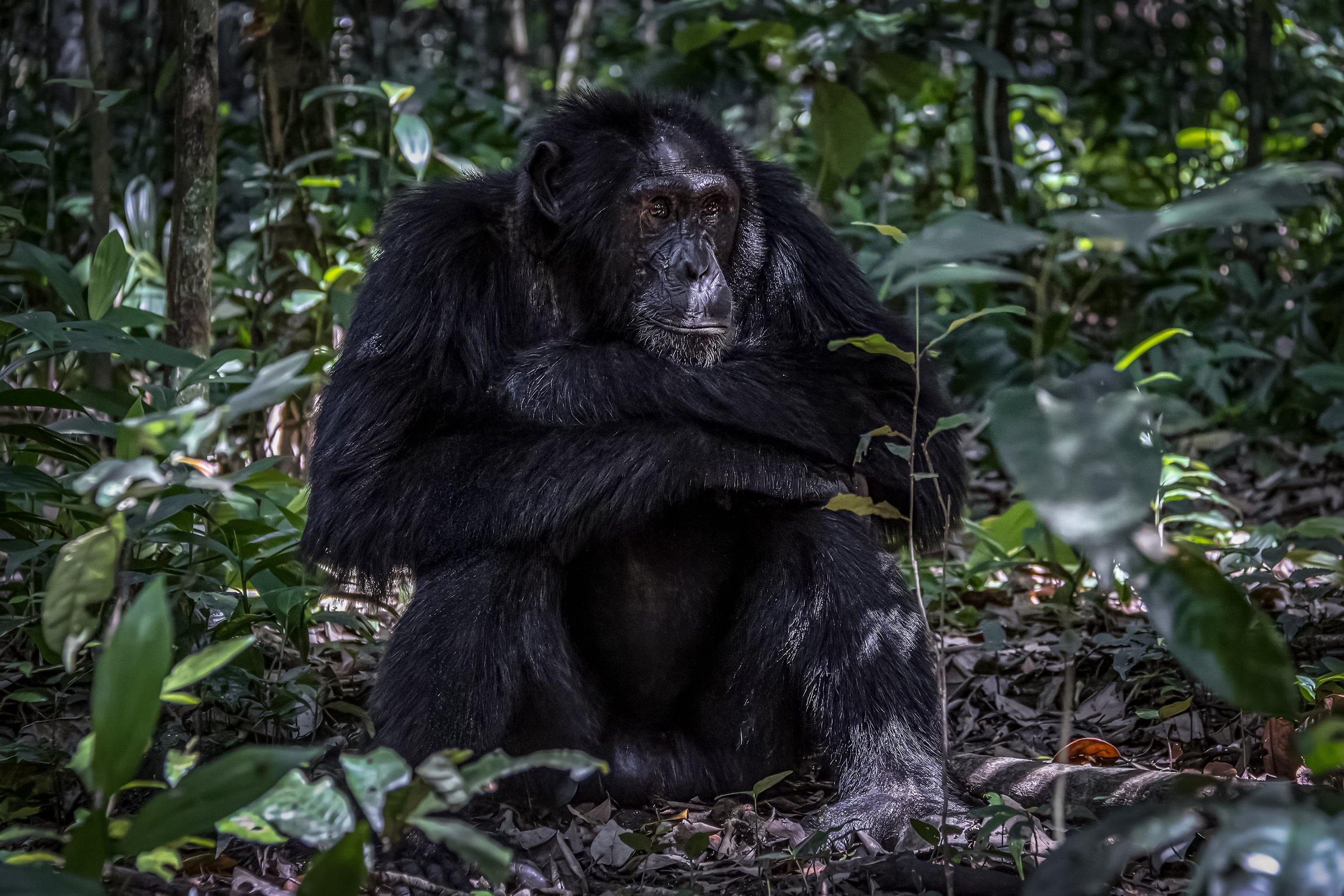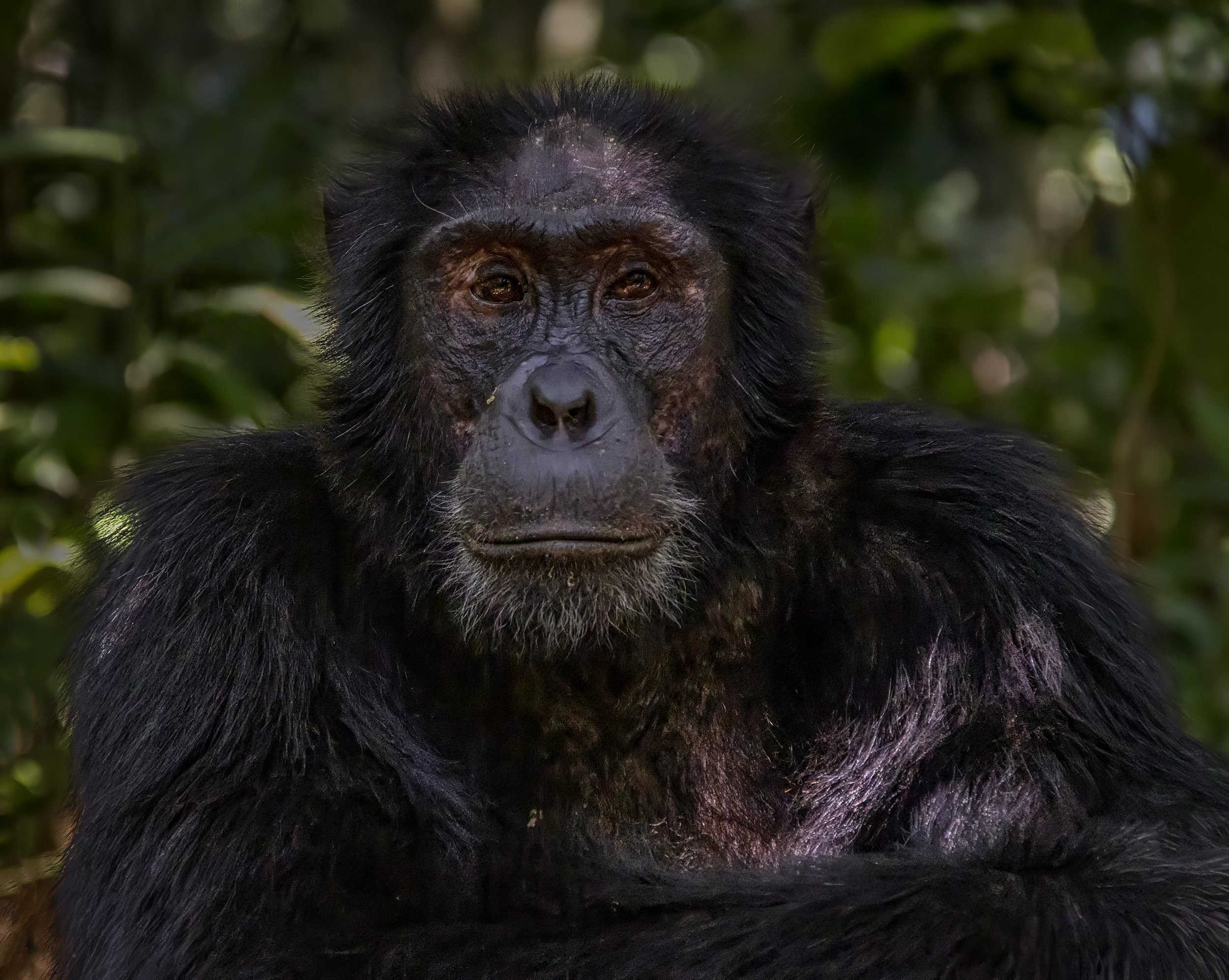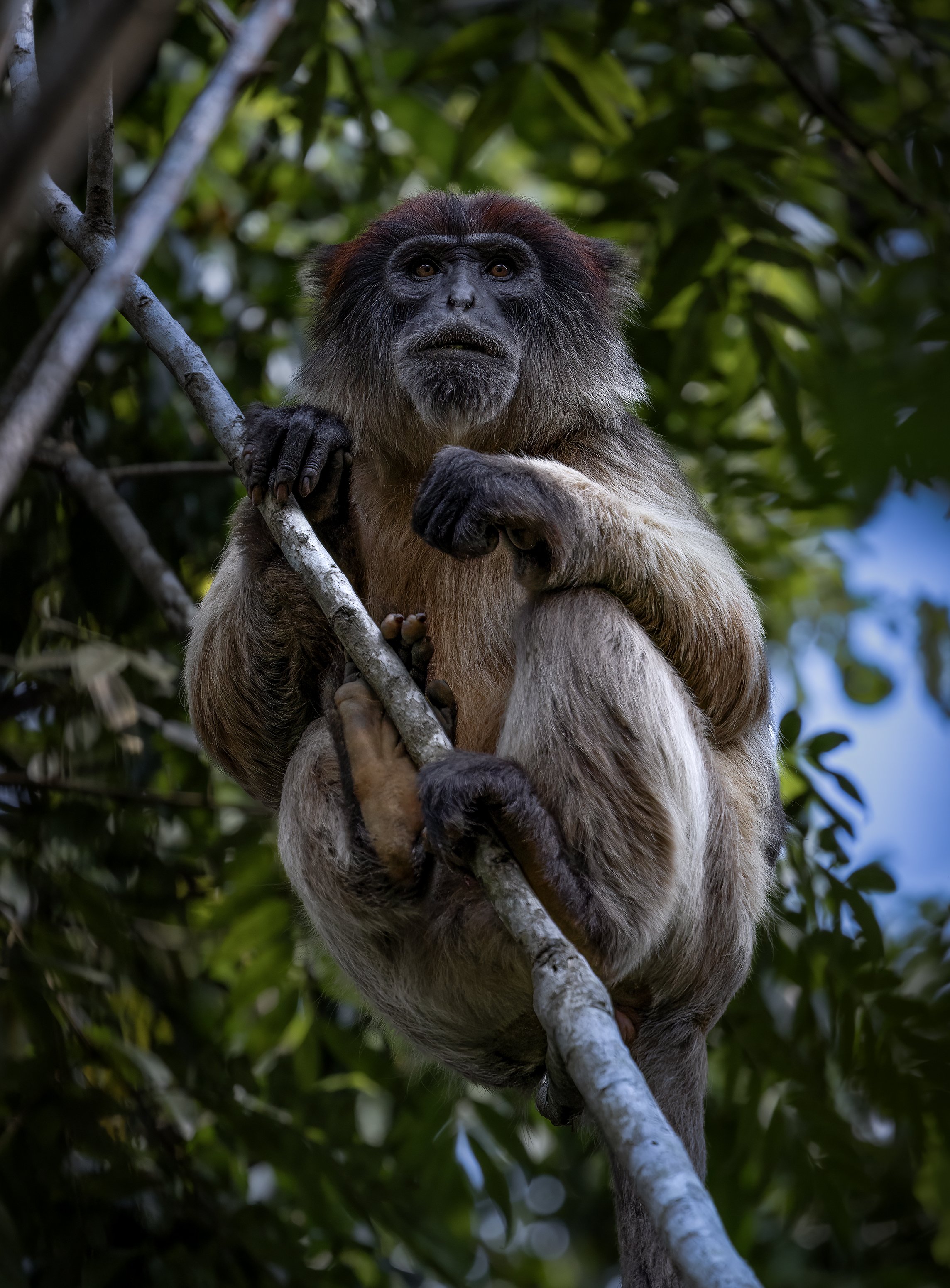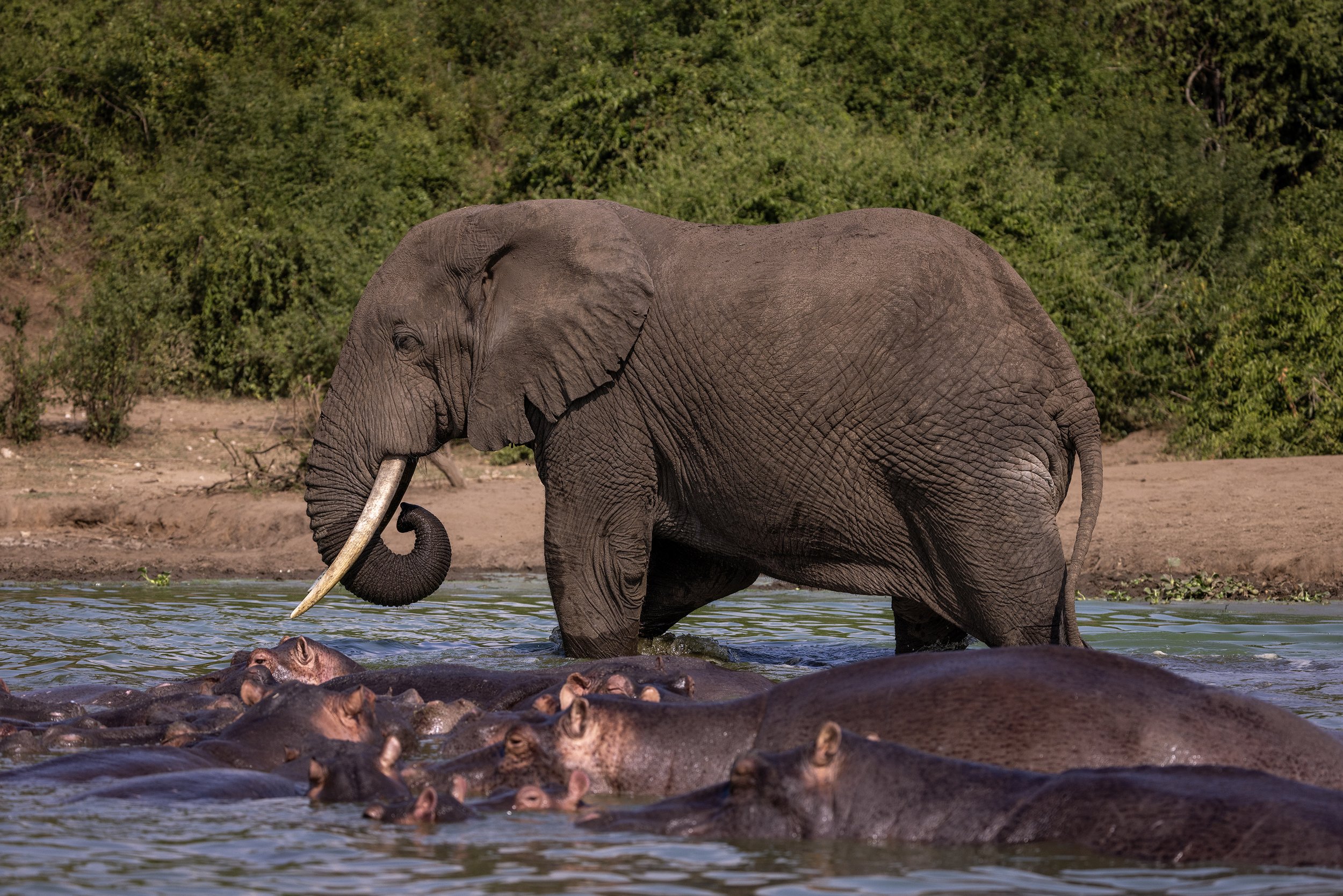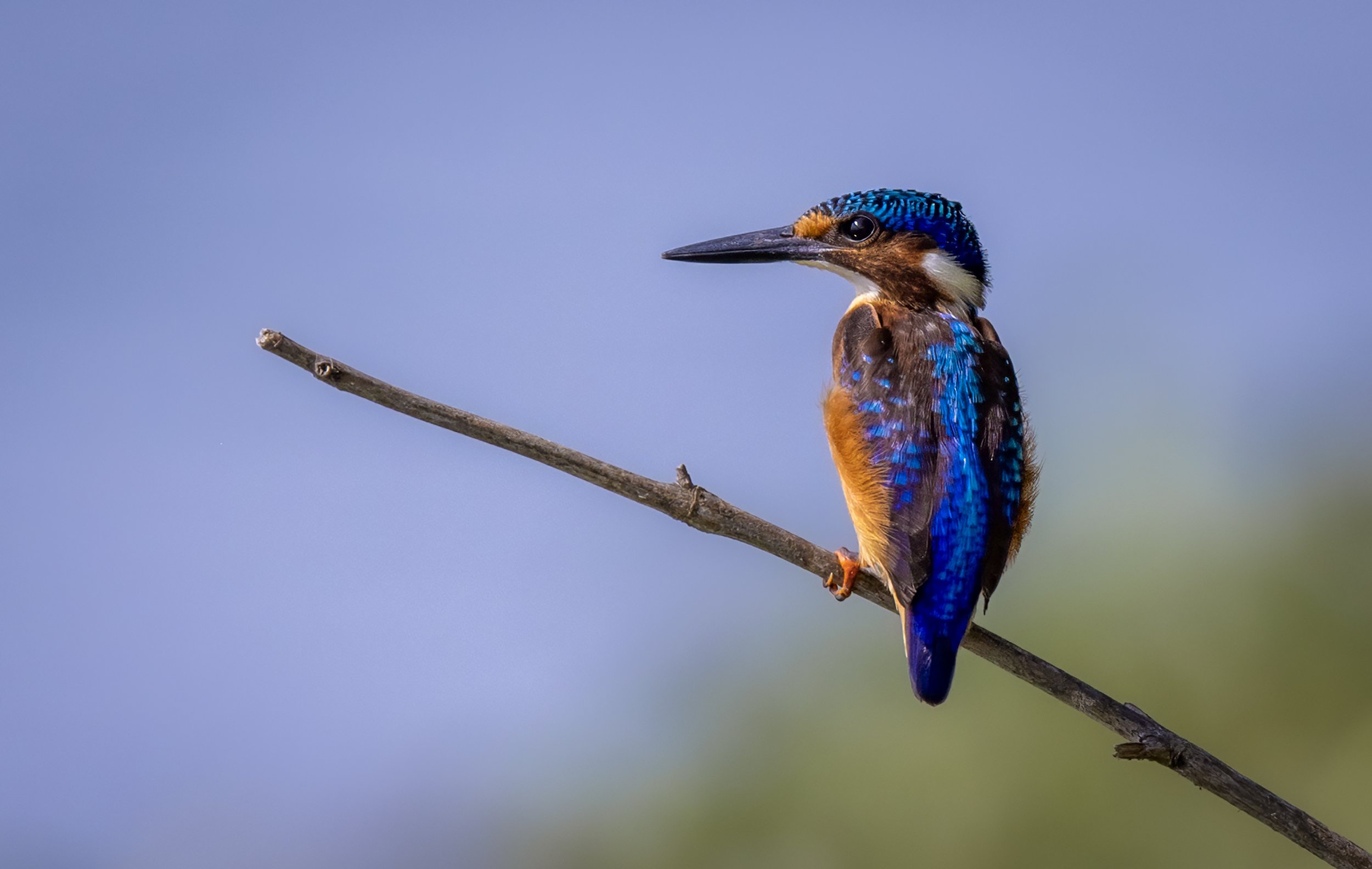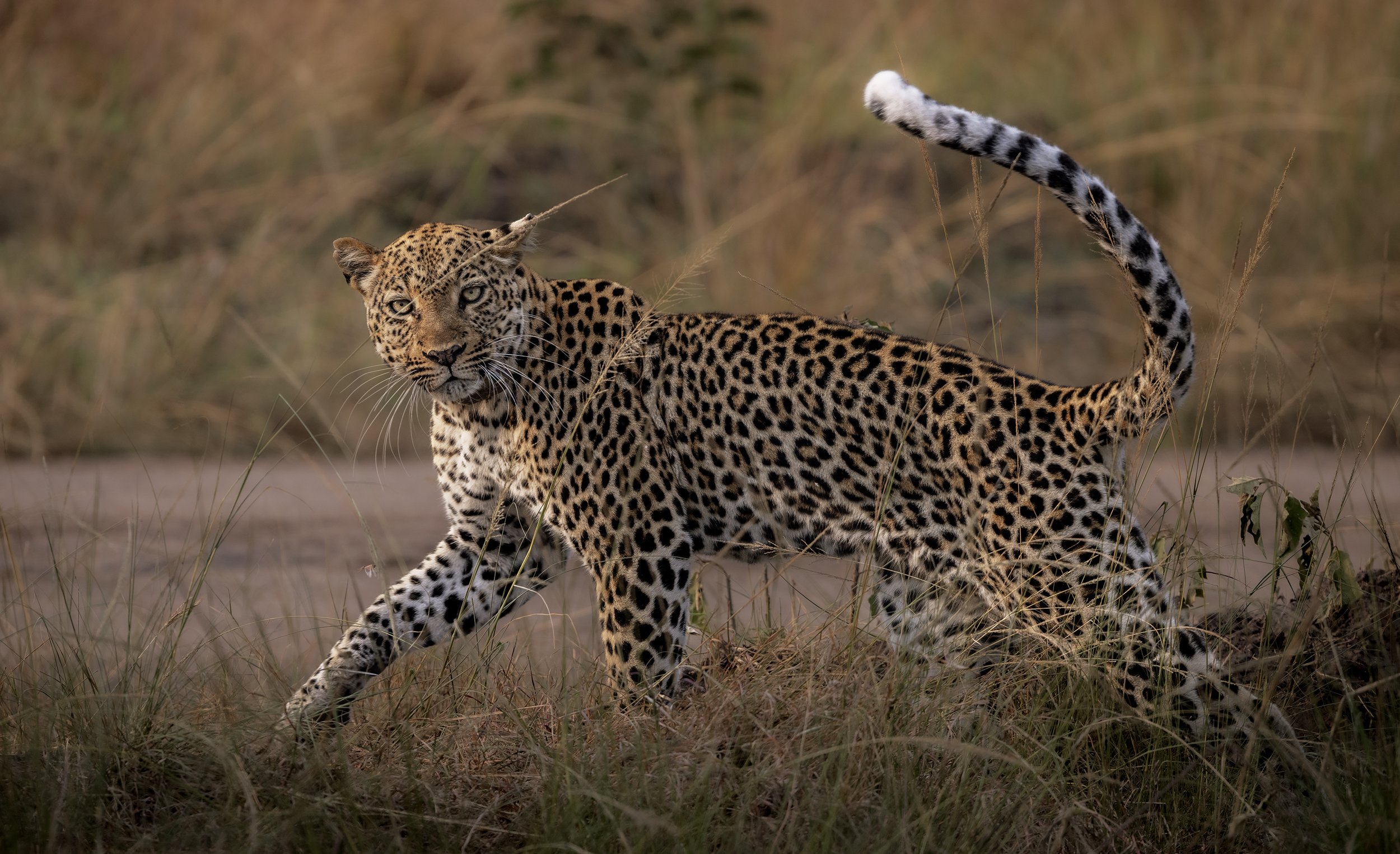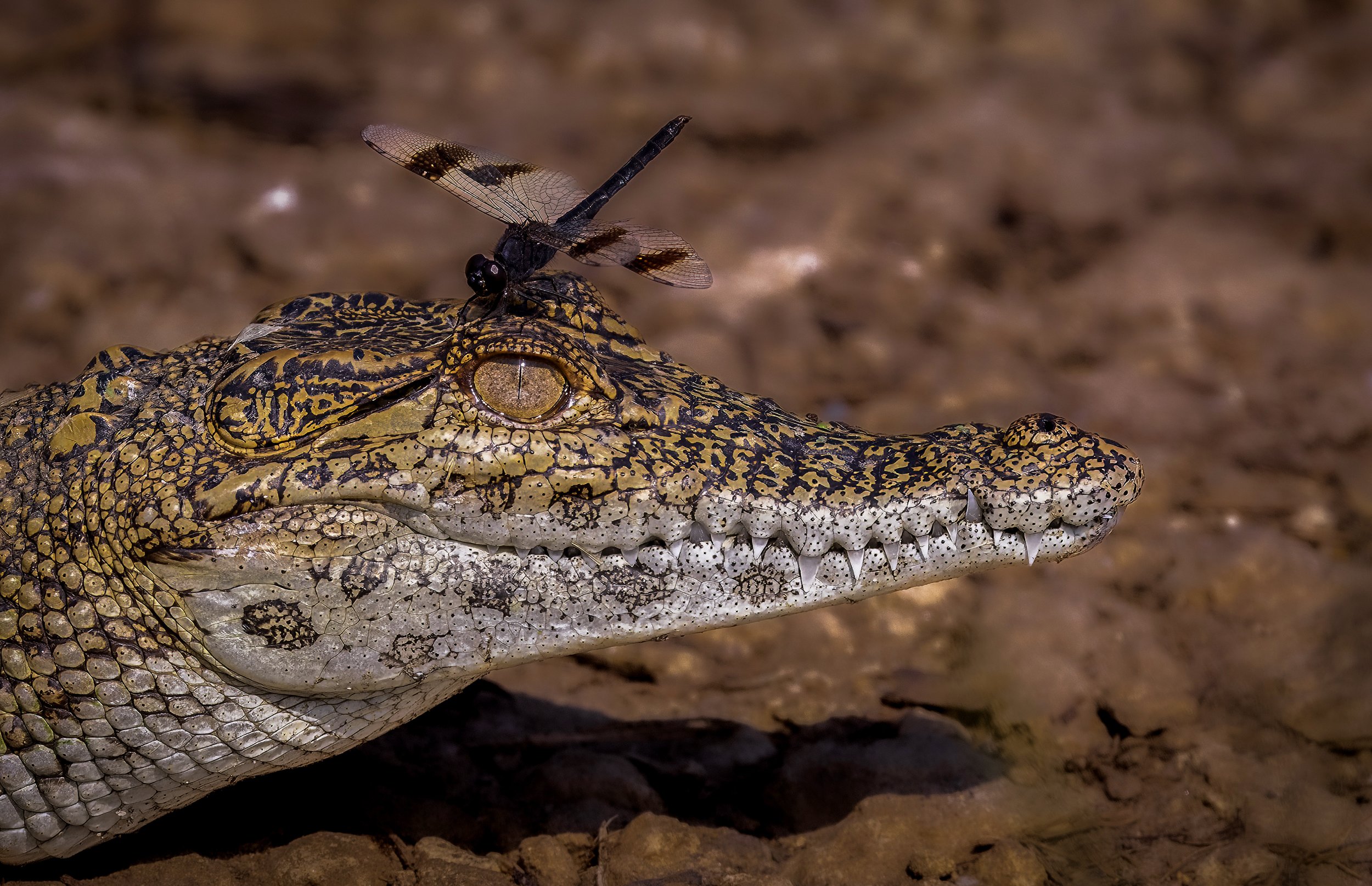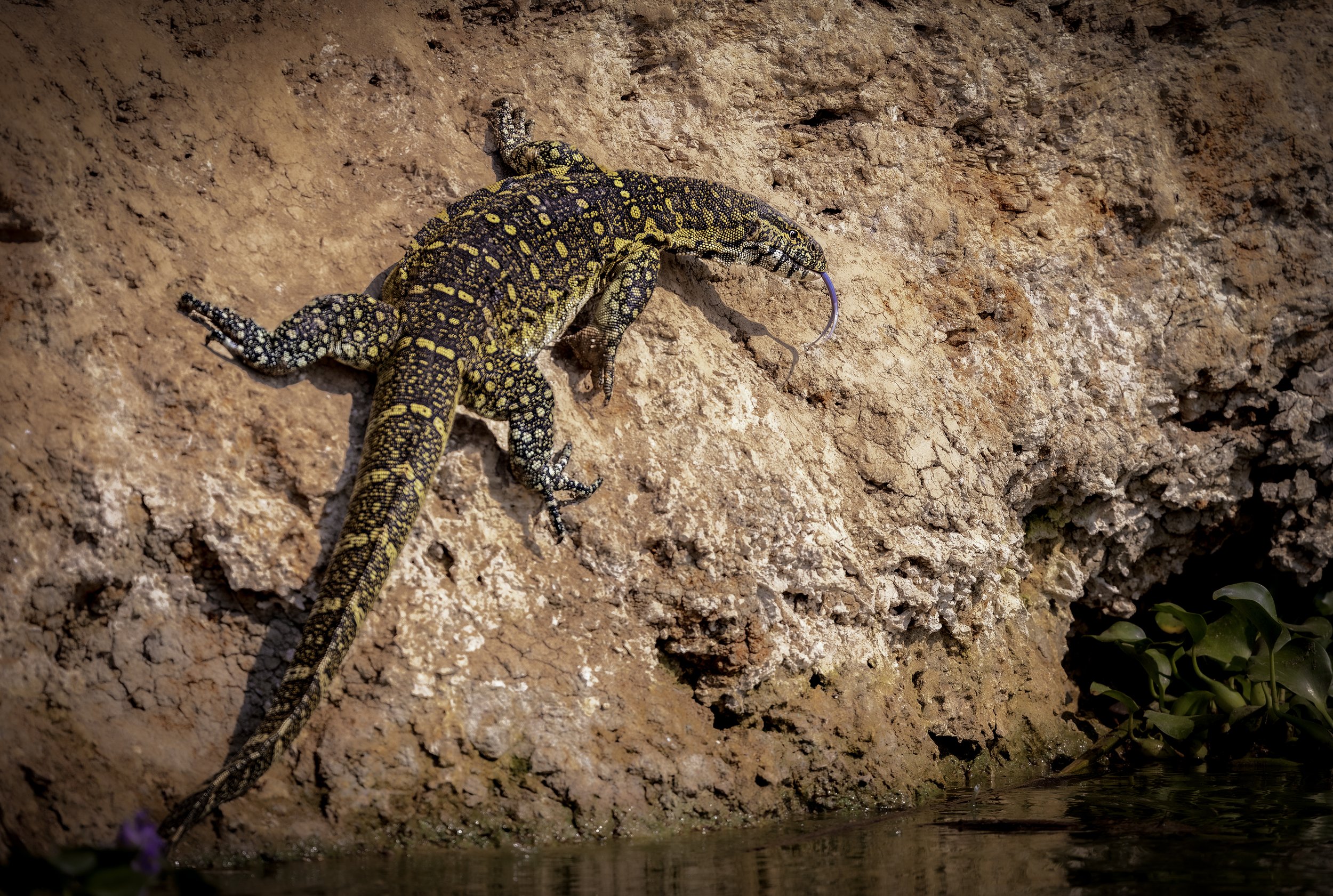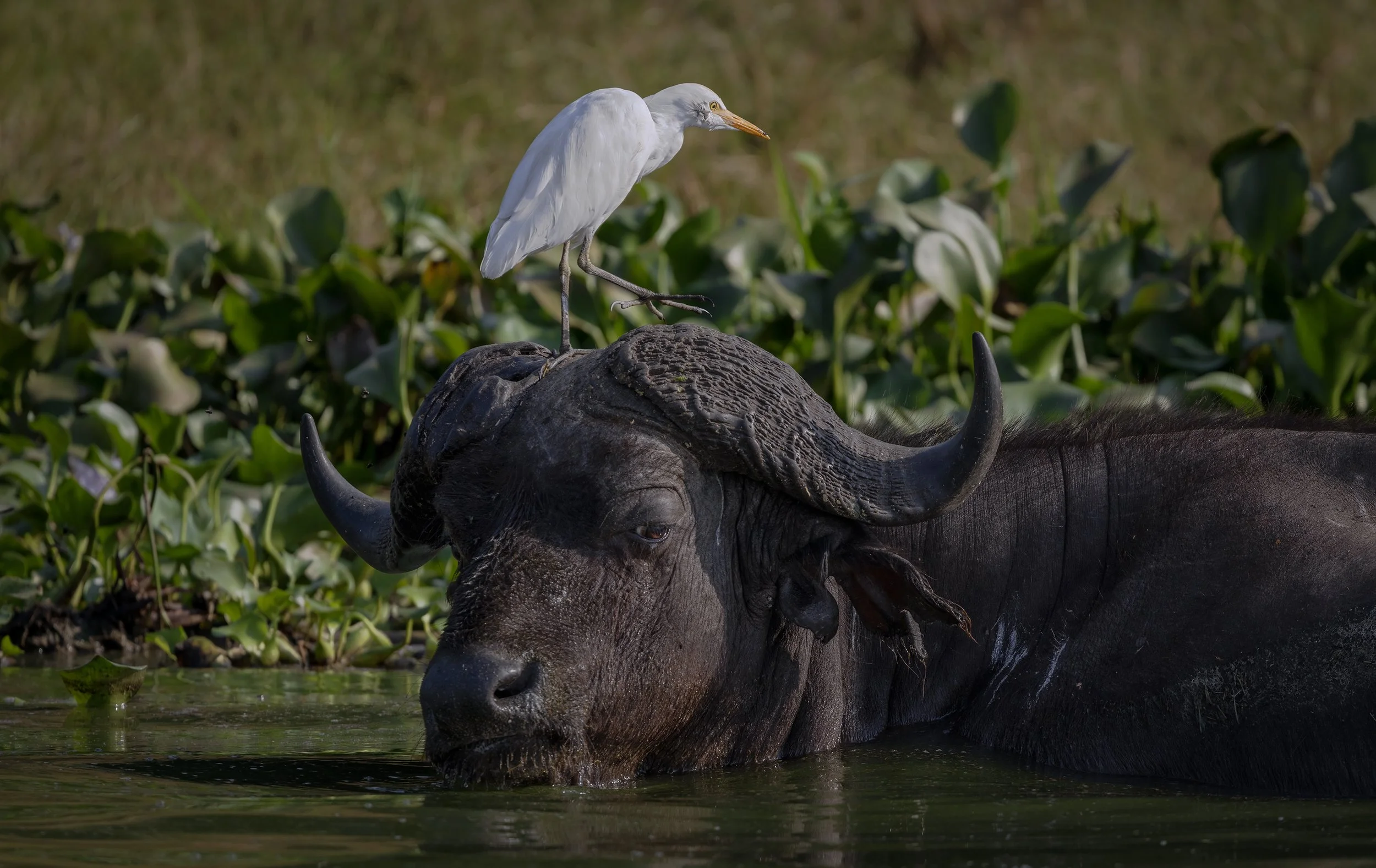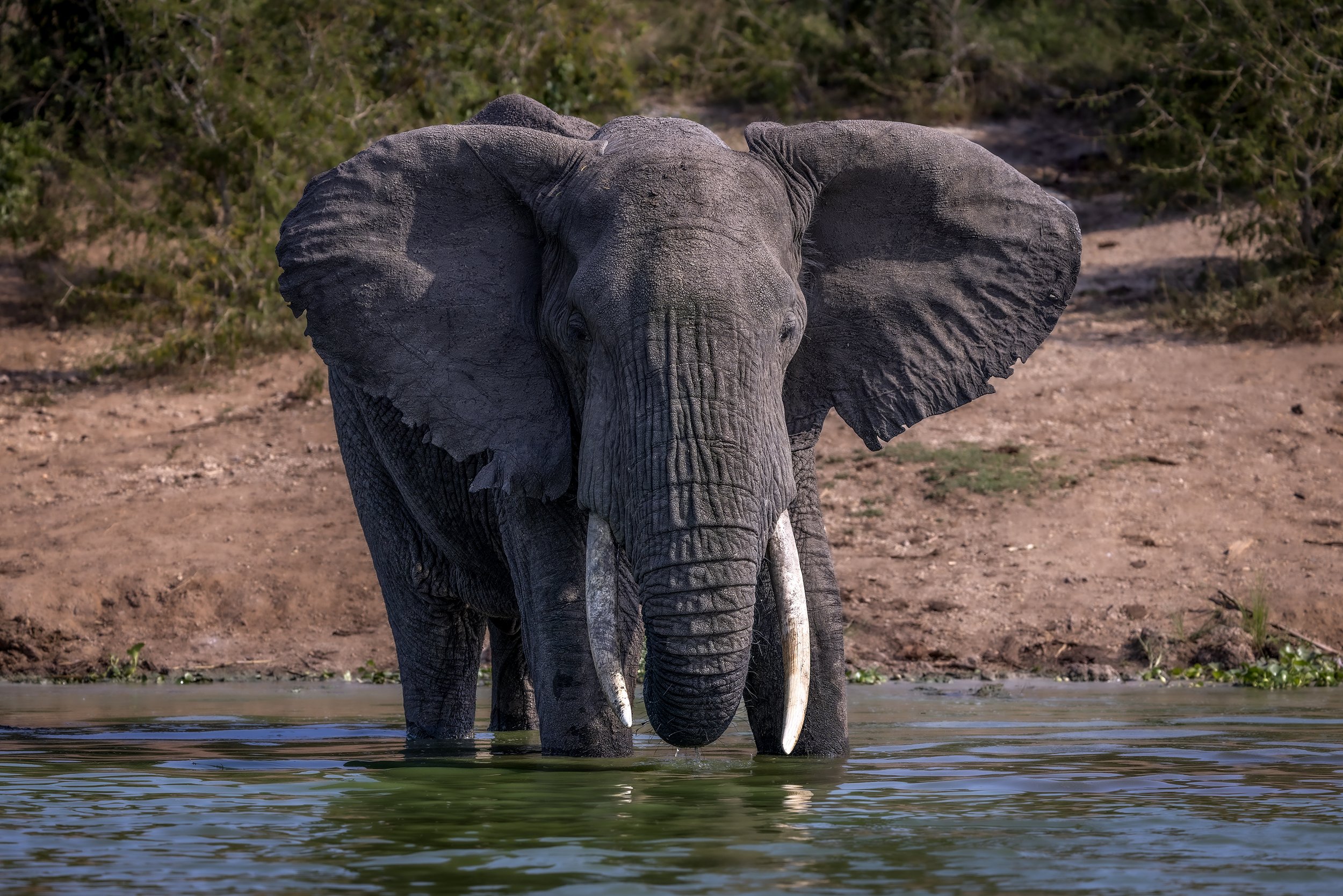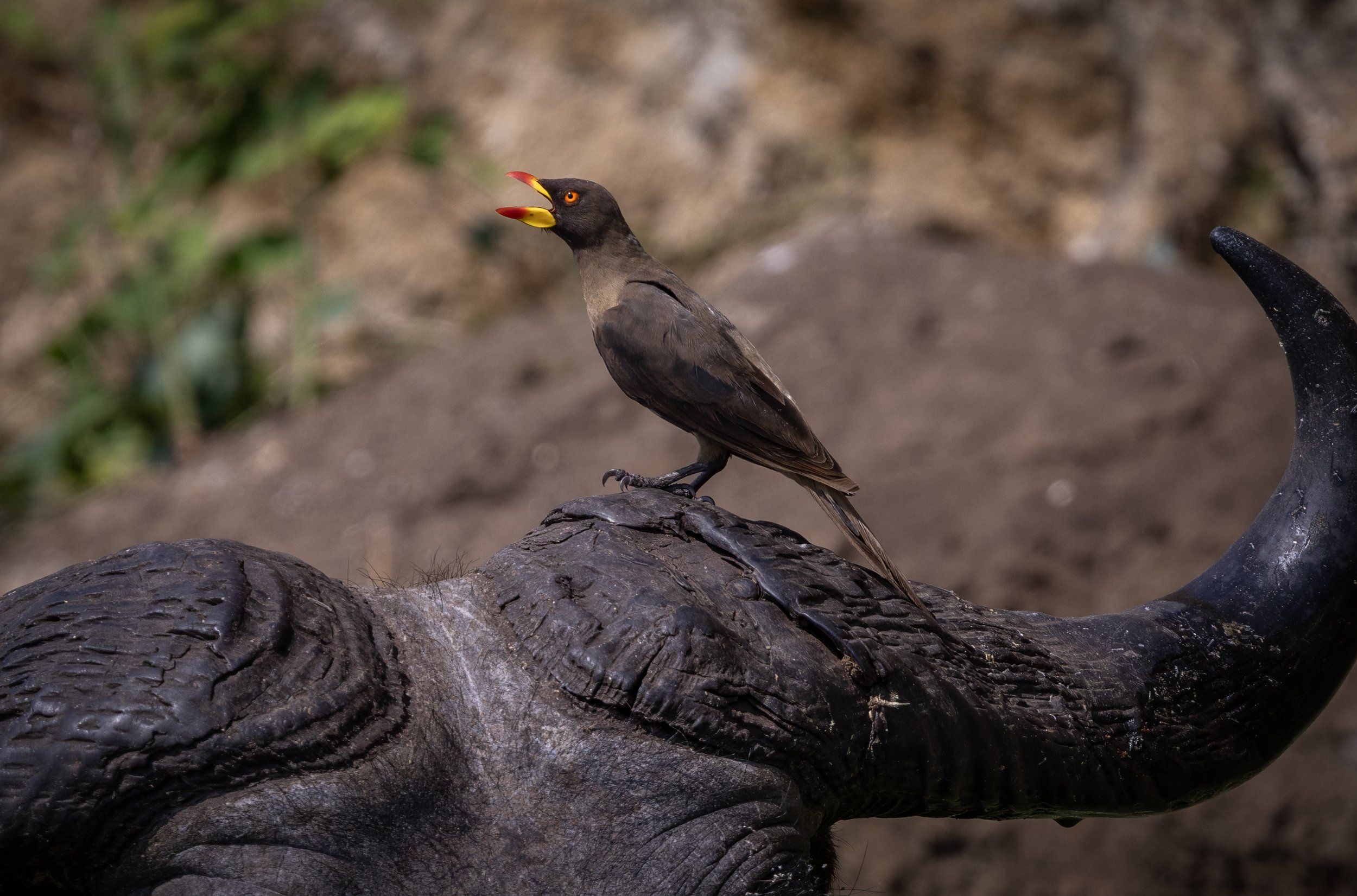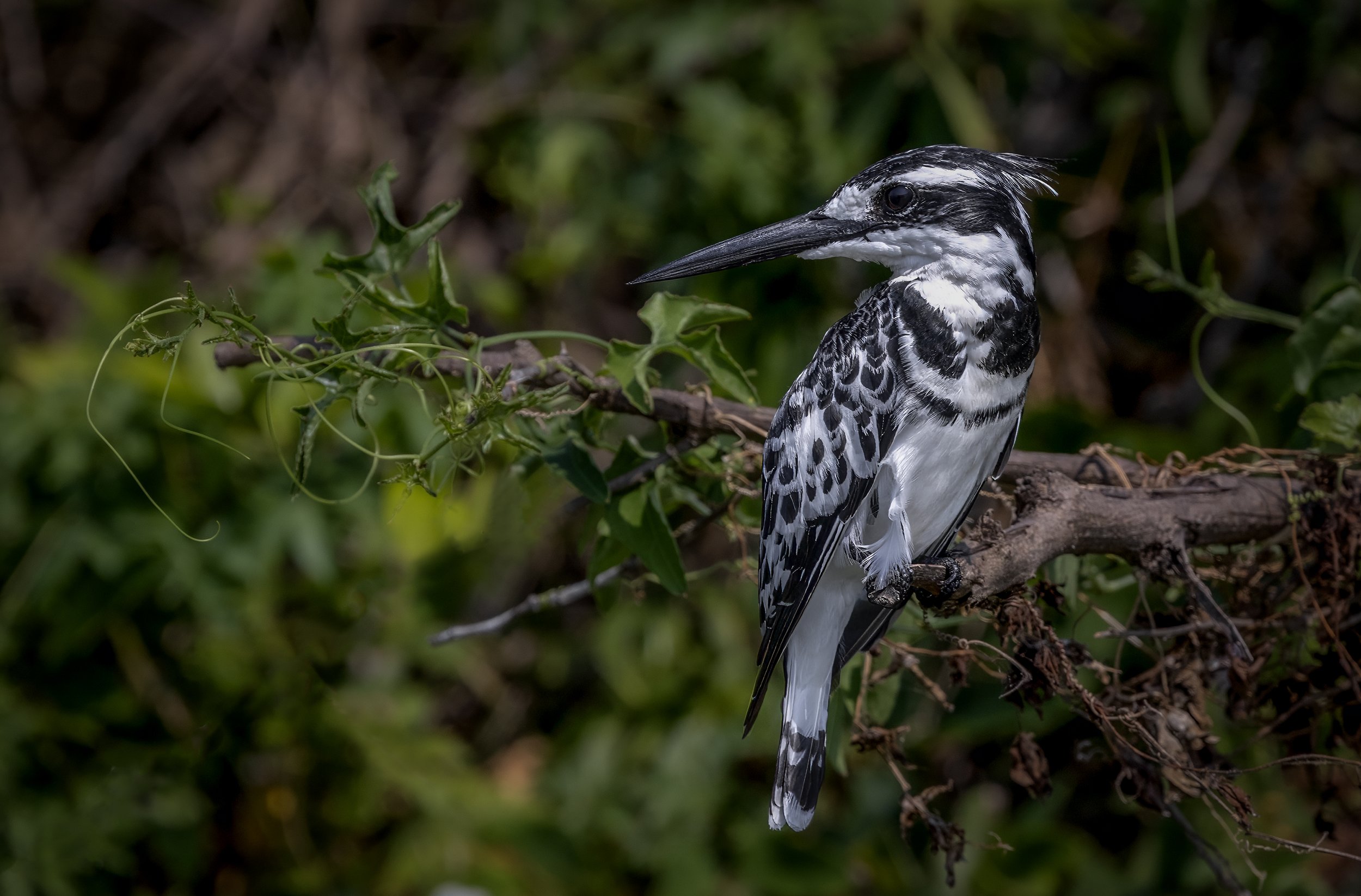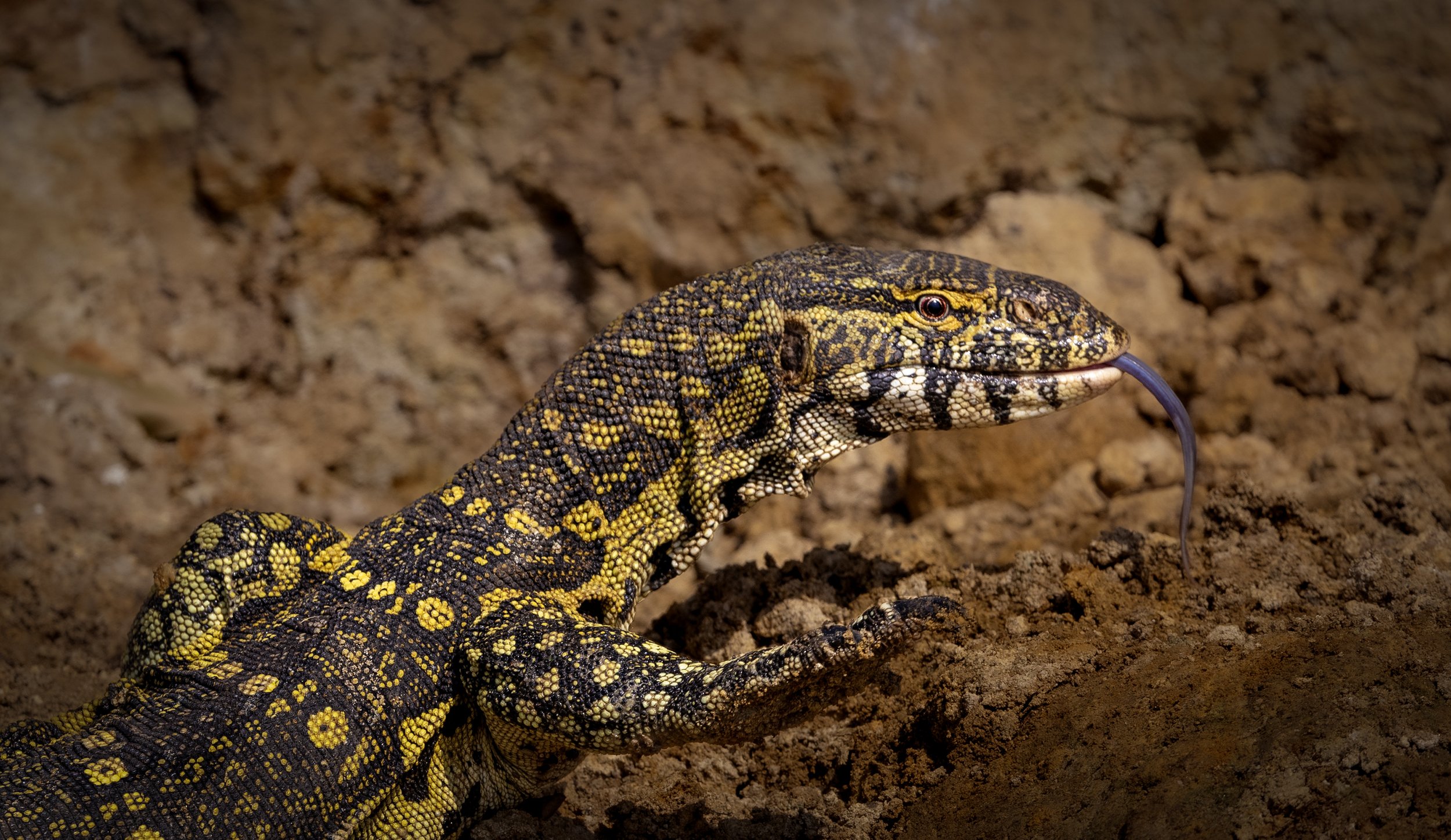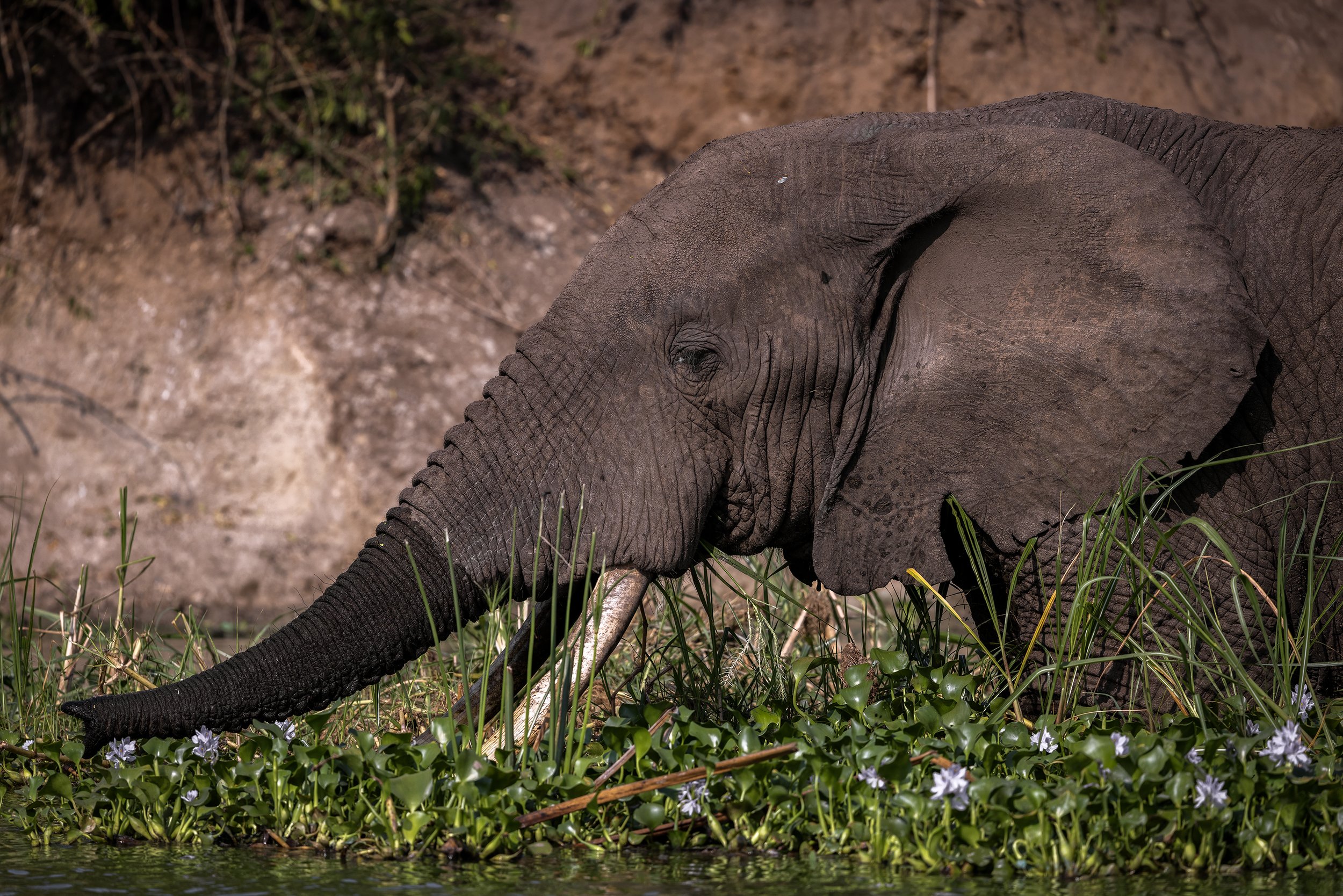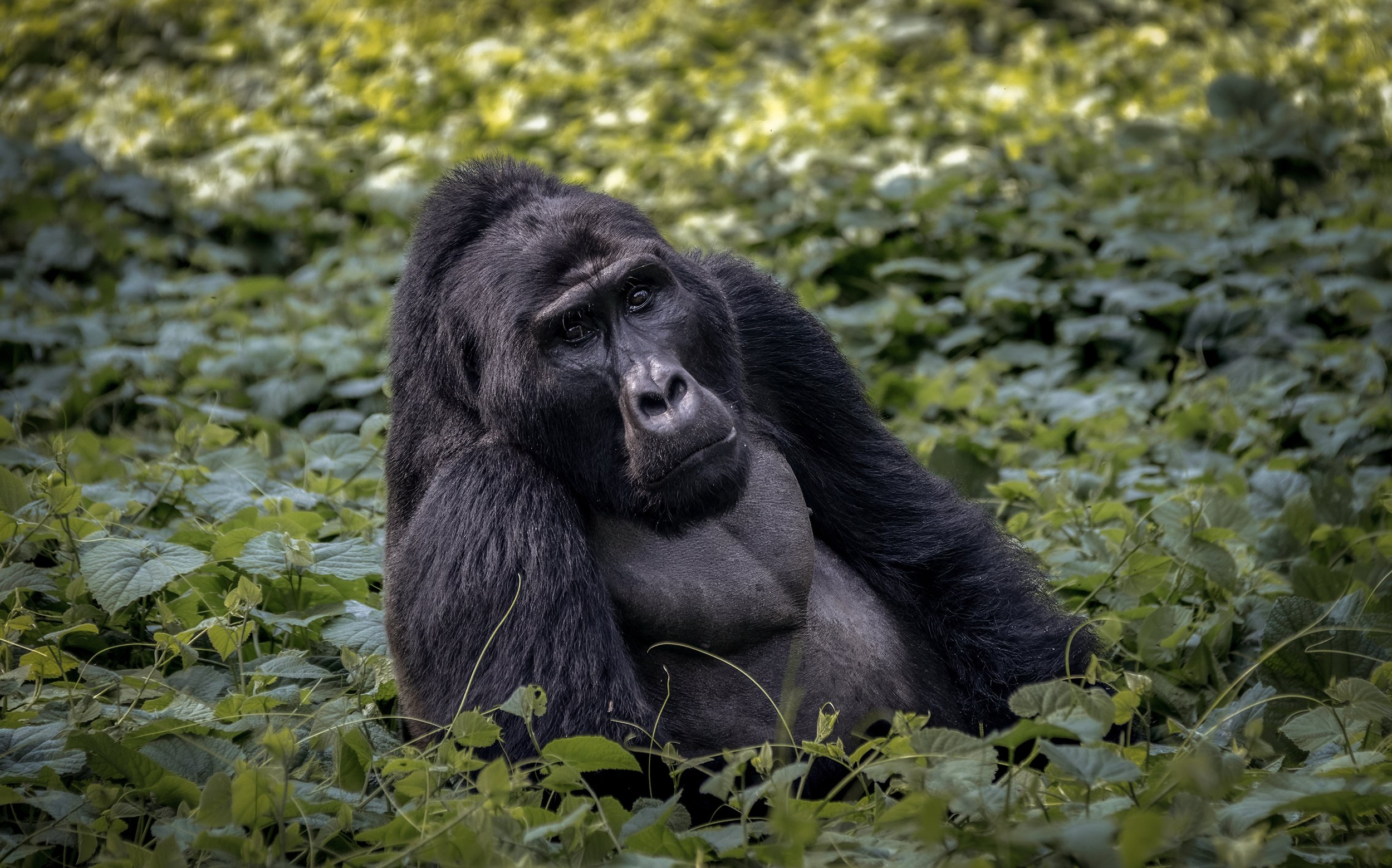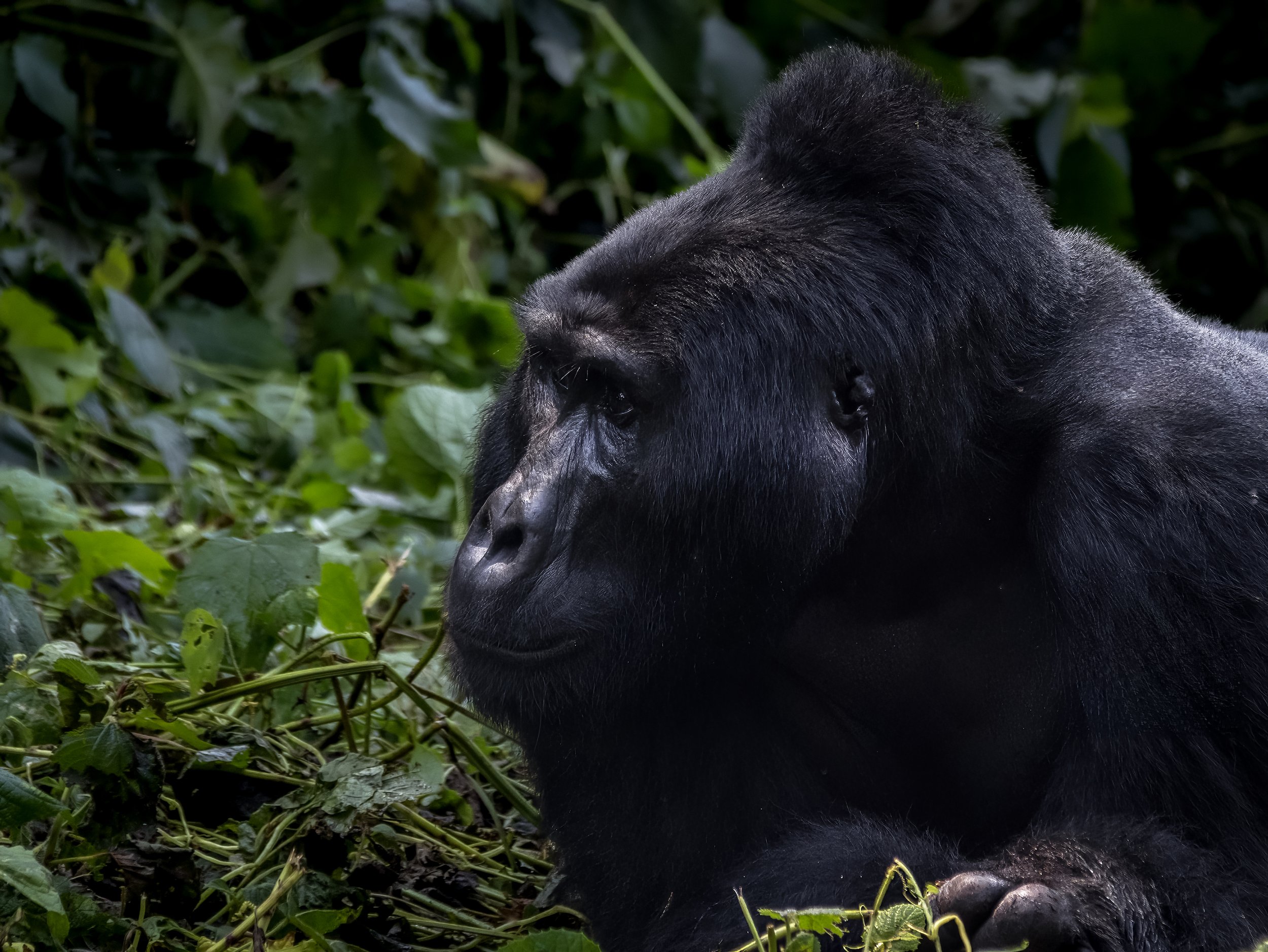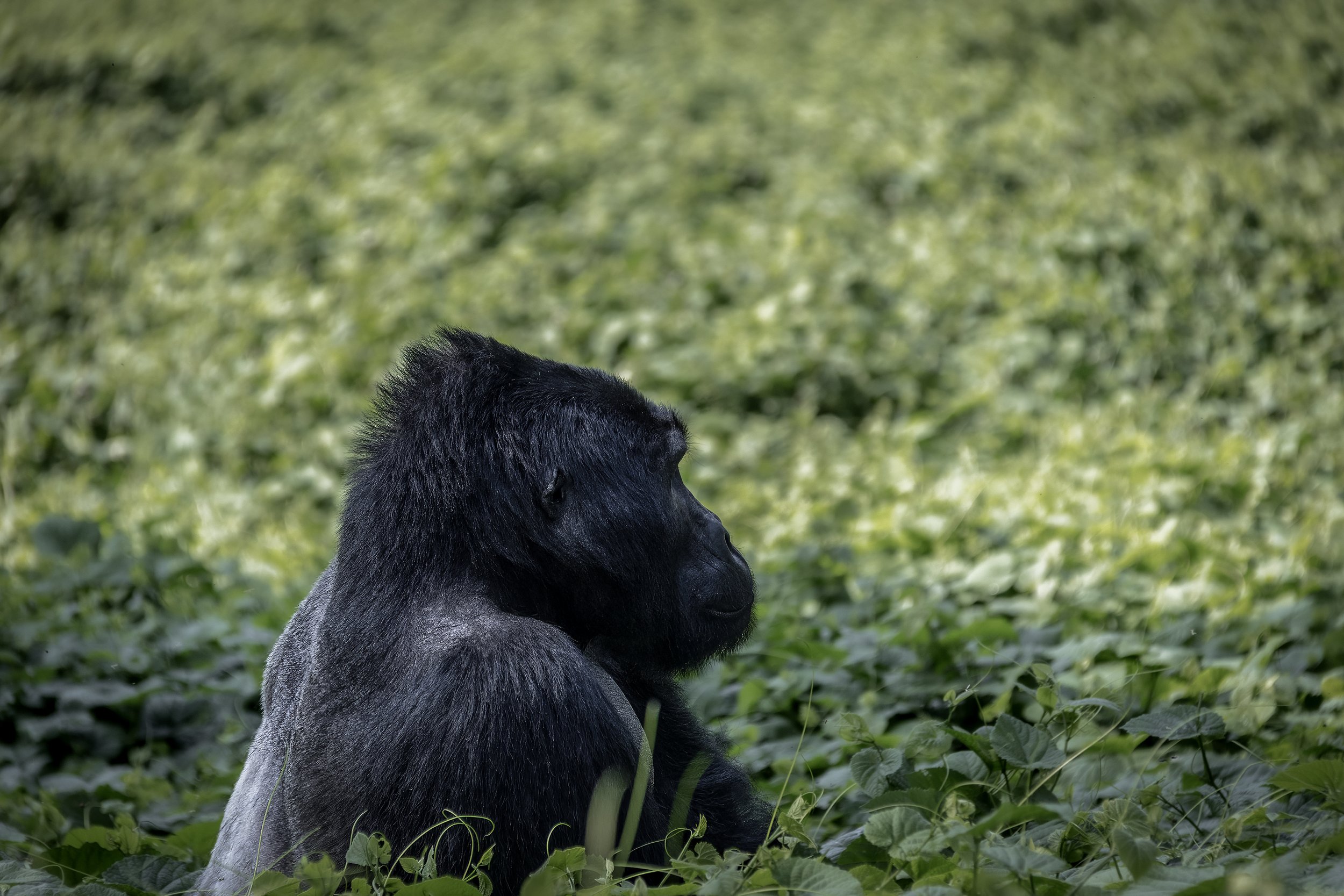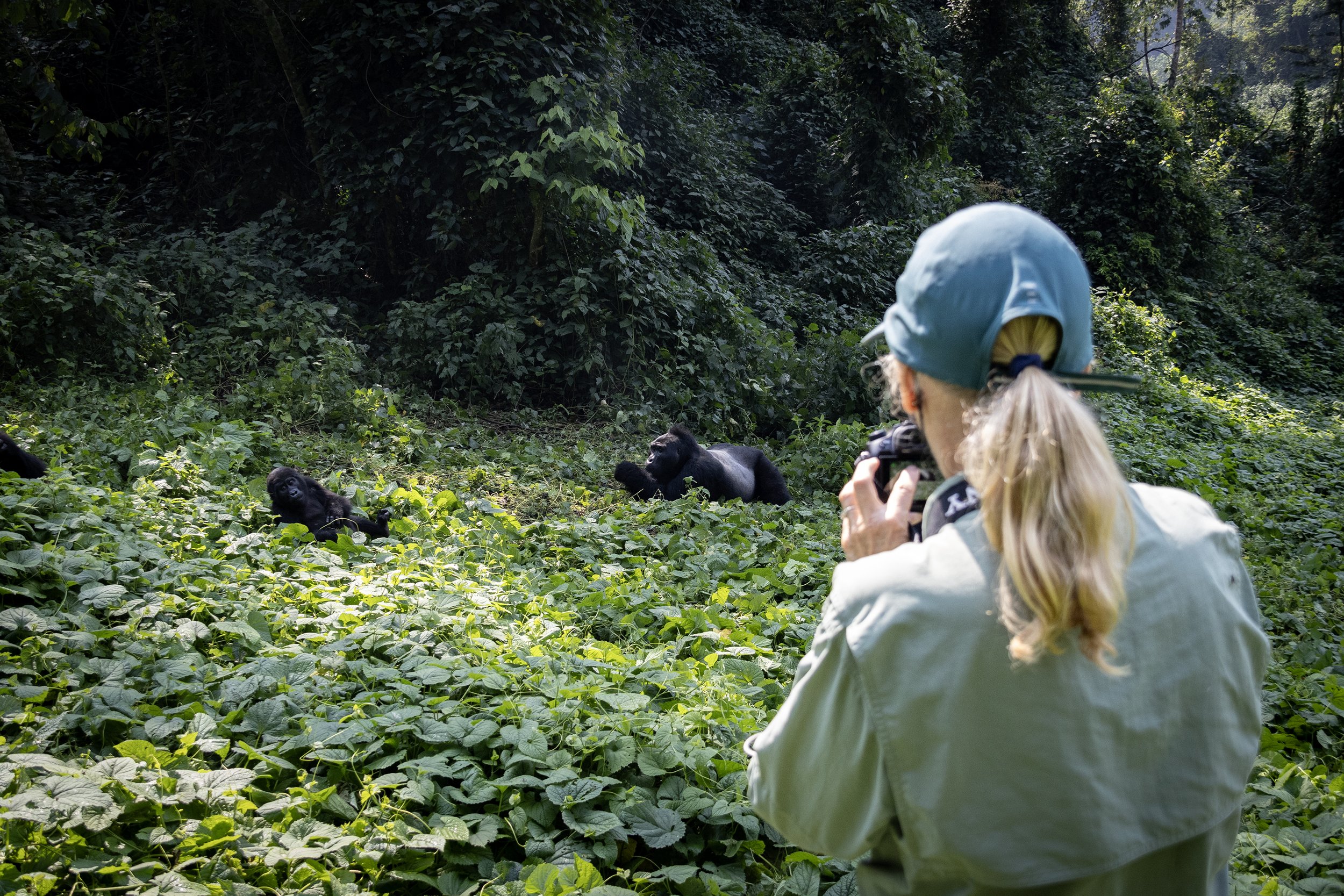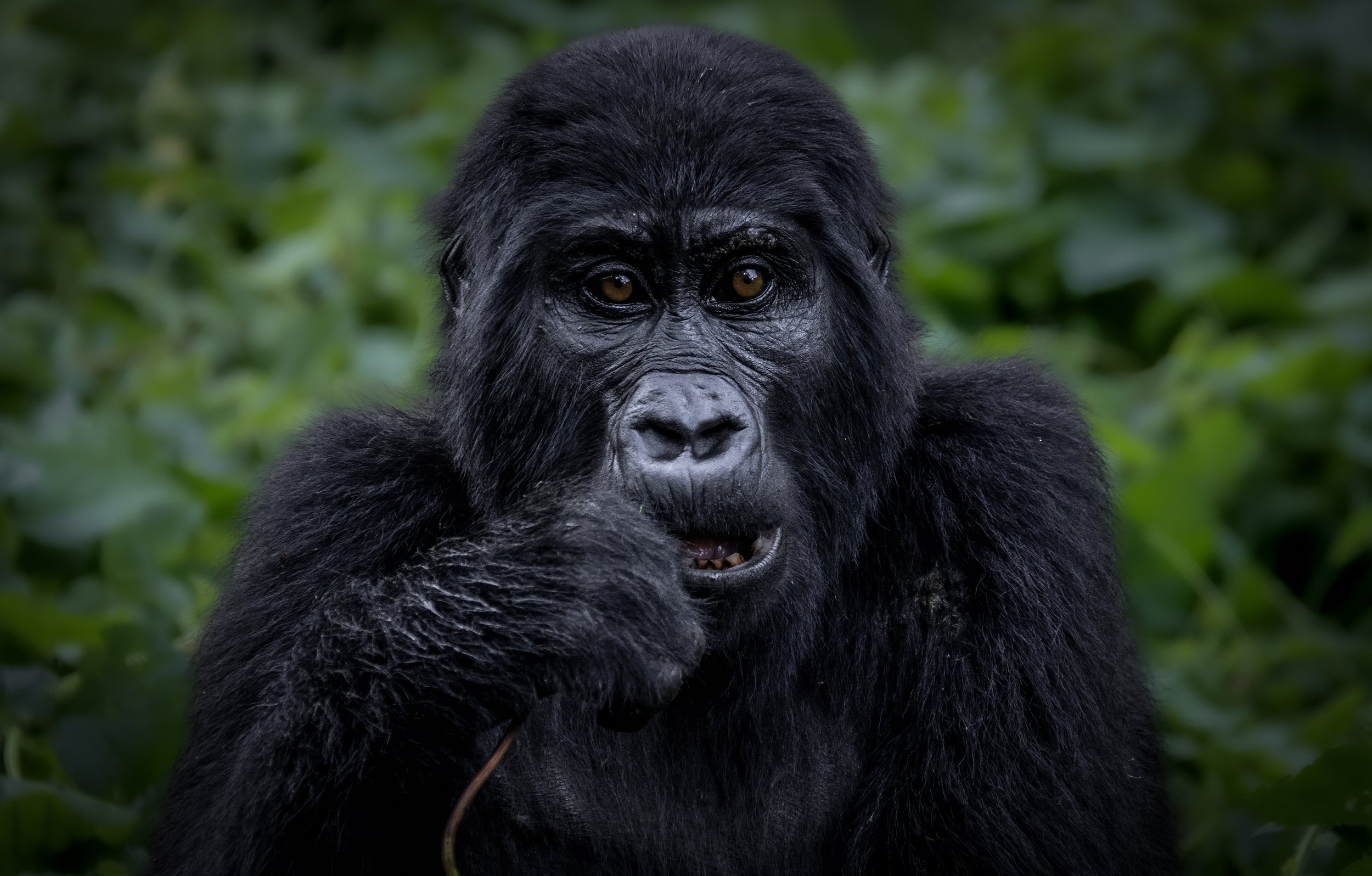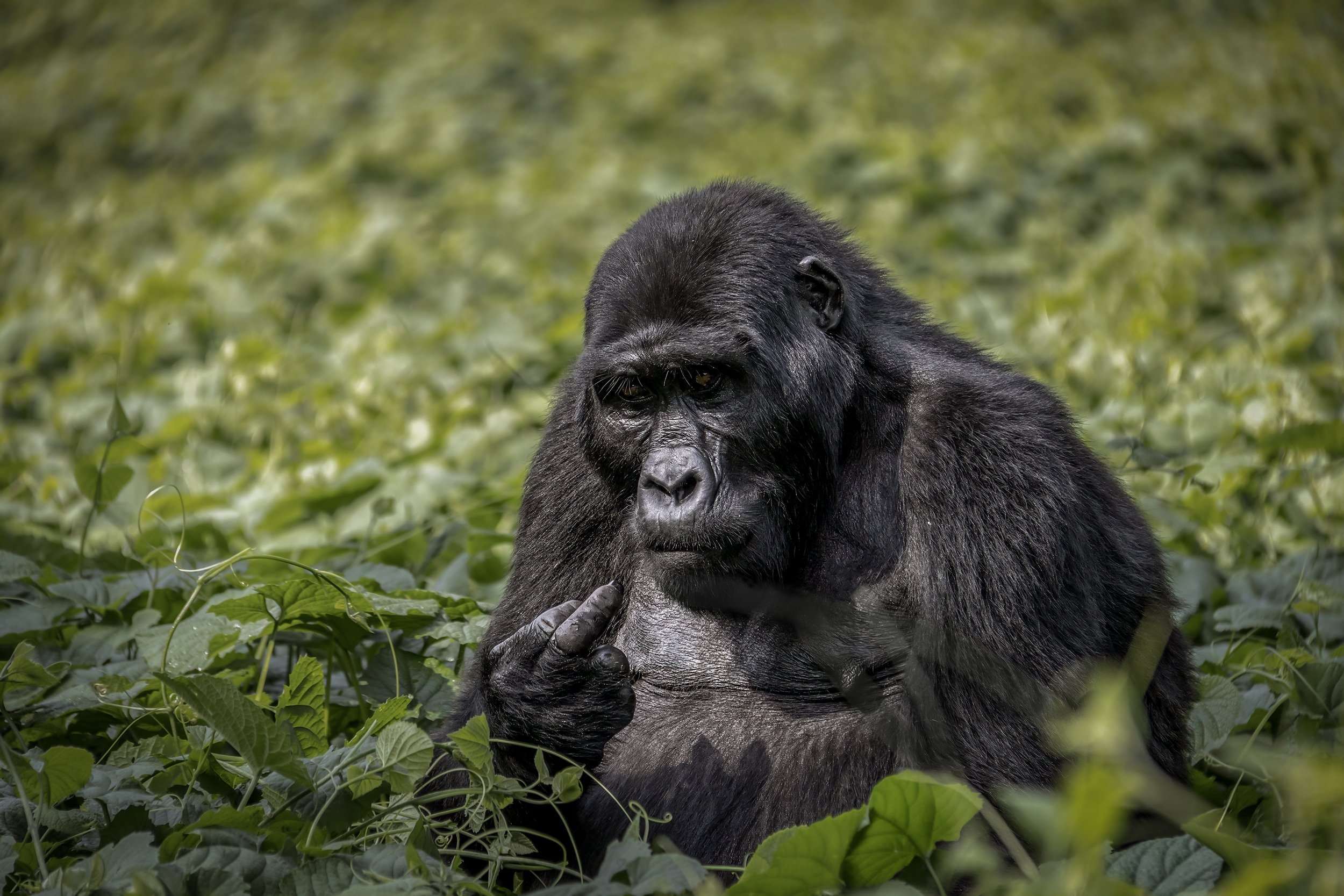Uganda Wildlife Expedition Trip Report 2024
Uganda
June 8 - 16, 2024
June 10, 2024- First Day of Wildlife. We are in Kibale seeking out chimpanzees.
I love starting out the trip this way. Visiting the Kibale chimpanzees is always a fun way to kick off the adventure.
We spent our morning searching for chimpanzees in the Kibale Rainforest. It took a while but we found them. We followed one guy through a trail and he led us to an area that forest elephants had really mucked up. I’m pretty sure he did it on purpose. It was nasty!
We moved through the area really slow to keep from sinking in deep mud holes that the elephants created. Some of us fell victim to the mud holes sadly. I found one.
We finally caught up to them. They were high up in the trees eating breakfast. This tree was tall and above the forest canopy.
After they were done eating they dropped down to the forest floor to take a siesta. This old guy sat there for a while, thinking about something… I wish I could read it’s mind.
We snapped several images of him. Light was a huge challenge. It’s so dark in the forest. I wanted to bump my iso up but I didn’t want to create a whole lot of noise in the images. You really need a world class lens to shoot in these conditions. The forest light is so unforgiving.
After a few minutes he got up to find a nice place to lay down. He walked over to another sleeping chimp and laid down. There were more apes still up in the tree. We waited them out and they eventually came down to the forest floor to take a nap.
We snapped a few shots of them before they passed out for their afternoon nap. I do love these animals.
June 11, 2024 - Day Two- Bigoti Swamp Monkey Hike.
This is always a fun way to spend the morning.
Bigoti swamp is a community owned wildlife park. The profits from this spot directly benefit the locals who live in the area. So they protect the wildlife that live here.
For me it’s a great way to give back to the people of Kibale.
What I love about this spot is the variety of monkey species you see here, for such a small area. It is also very scenic. The trails are beautiful. It’s a nice hike and a bonus wildlife stop for this area.
During our hike we encountered four species;
Red tailed monkeys
Black and white Corobus monkeys
Red corobus monkeys
Vervet monkeys
The species of red corobus monkeys that lives here is endangered. There are a lot of subspecies of red corobus monkeys and I am not away of their conservation status, but this particular species can only be found here in this park.
We spent a couple hours here and there returned to our lodge to have lunch, pick up our gear and then hit the road.
While having lunch I managed to snap a couple of the hotel locals. A Red legged sand squirrel and a green-headed sunbird. The sunbird is Africa’s version of North and South America’s hummingbird. They are just as beautiful and do the same job, eating nectar and pollinating flowers.
After lunch, we drove to Queen Elizabeth Park, which was about a three hour drive. About 30 minutes from our hotel, there was a traffic jam on the road. An elephant on a busy highway was trying to forage on papyrus plants on the side of the road. There were vehicles going by, with a lot of kids walking home from school.
Big trucks were honking their horns trying to scare the elephant off. The elephant was stressed. This is one of the biggest challenges that wildlife faces - Living in a world that is no longer theirs. We humans have taken over this planet, and whatever is left of our wild places always seems to border human habitation. And every year the wild places get smaller and smaller. We share this world with wildlife. Sadly this is something people seem to forget.
June 12, 2024 - Day three- first day on Safari in queen Elizabeth Wildlife Refuge.
We have two safari sessions for the day; one in the morning, and one in the late afternoon.
We are hoping to see big cats. Well we hope to see everything, but we all want to see the cats.
We stopped by the ranger station to pick up a ranger. The morning was cool, but as soon as the truck stopped, we could feel the heat of the day already starting to sting. It wa going to be a hot day.
Our ladies that were in the van with David arrived to the ranger station late. They were slowed down by a herd of elephants crossing the highway. 30 members strong. We missed the show.
Our ranger guide was one of David’s old friends. He will be guiding us for the day. He is a veteran ranger that has been working there for more than twenty year. Always great to have that local knowledge for a place.
David told him what we wanted so right away he took us to a spot where lions had been tracked.There was already a few safari trucks there. The guests in their trucks were standing up looking out into the distance. We looked hard but saw nothing.
About a hundred yards away, laying down in the tall grass was a male lion laying down.We couldn’t see the cat, but thanks to the help our guide, who pointed it out, we saw the black colored tufts of its ears above the grass line, betraying its presence.
He eventually sat up, staring off into the distance at some antelope that were hanging out by a drying water hole. A few African buffalo also were there.
The lion just stared, eventually he stood up and stalked towards them. He was far off, but you could see he was big. His manes thickness, was thick, but not full like you see or expect a big male lion to be.
He wore a tracking collar. This guy was part of a four brother pride that was well known in the area.
It was exciting to see this guy. He was far away, but it was still exciting.
There were no signs of his brothers anywhere. We figured they were somewhere else near the watering hole. I am sure planning an attack.
We watched him stalk closer and then he stopped and laid down again. His eyes never turning away from the waterhole.
We stayed for a good forty minutes and then our guide suggested we go look for leopards before it got too hot. So we left our lion.
We stopped by a boggy salt lake area where the locals harvest salt. They have these pools where they dry them out then harvest the salt residue left behind. There was a lot of bird activity here, including a large flock of greater flamingos in the distance. We snapped a few images of them, and then quickly moved on. The smell there was pretty tough.
We continued our search for wildlife and drove around till noon. We saw water bucks and buffalos, a couple of hippos way in the distance. But no leopard.
At noon we returned to our lodge to eat lunch and hide from the afternoon heat. Our second safari was planned for 4PM.
4PM. We returned to the park to see what we could find. It was quiet, not much was moving around. The day was really hot, and I imagine the majority of the wildlife were hiding from the heat.
The highlight of the afternoon safari for me was a Nile monitor lizard walking around on a drying muddy waterhole looking for water to drink.
Sadly all the water was already evaporated slurped up by the antelope and buffalos. Nothing left for this thirsty lizard.
We called it a day and went back to the lodge for dinner and a hot shower.
June 13, 2024. - day four. Safari in the morning. My alarm didn’t go off because I stayed up late editing images and I forgot to set it, so I woke up rushed. A quick 5-minute breakfast and we were off. David got a call of a leopard sighting so fingers crossed we will find it.
I was not sure if we would find the leopard because animals are always on the move.
When we arrived to the area where it was seen, we found all the cars still hanging around a cactus tree, right by the road. Just my luck, the cat was still hanging around! Our beautiful cat was sleeping soundly.
Not even a minute after we stopped the vehicle the cat got up and climbed down the tree and walked out onto the road. Our van was in a great position to snap a few shots. We quickly moved our van up ahead and got lucky again. The leopard decided to turn off the road and head into the grassy fields right next to our van. I scanned the field and saw a small termite mound positioned perfectly in front of us, about 30 yards away.
I thought to myself how cool it would be if the cat climbed up that termite hill… she did! I was on fire, the cat climbed up on it. She looked around the surrounding area, my guess for prey or predators and then continued on walking through the grass.
I snapped a dream image of this beautiful, beautiful cat. Sadly the cat wore a tracking collar. I am not a fan of those tracking collars, but I get their importance in the conservation of the species.
The cat disappeared, and we decided to move on. The encounter was brief but so memorable.
Right after that we drove on. While we were with the leopard, our guide had recieved another call. Four lions were sleeping on the roadside, a couple miles up ahead.
We got there to find three males and one female sleeping soundly. They were sleeping under the shade of a tree island. There was a lot of vehicles looking on, and because we arrived late, we were not in a great position.
Even though we were late to the game we managed a few keepers. Our guests were happy and that is all that mattered to me.
Temperatures were rising, and the cats were panting from the heat. Two of the cats walked off to another bush and two males remained where we were.
We stayed with them for a little while and then said goodbye to the big cats.
We spent another hour looking for more wildlife, but with the soaring temperatures not much else was going on, so we decided to call it a day.
Afternoon river tour in the Kazinga Channel. All I can say about our river tour was wow wow wow!
We motored out into the channel, cruising the coast line, scanning the high cliffed edges of the channel for wildlife. Bushes, trees and tall grasses peppered the walls. The perfect habitat for birds, lizards and snakes.
Kingfishers and other water birds were abundant here. We also encountered a few Nile monitor lizards. One that was massive.
A blue-headed agama lizard was on a tree and I almost got a picture of it, but it took off before I could snap an image. Damn they are fast!
In the water scattered about were families of hippos. Some groups were small ,with 3-5 individuals, other groups were larger with 15-20 individuals.
We also saw a tiny Nile crocodile basking on the river’s edge. A dragonfly landed on its head and I snapped a few shots for size reference.
A big male elephant with huge tusks walked down into the water. A family of hippos were voicing their dislike of the elephant walking into the water to cool off and get a drink.
Our guide said that the elephants often chase off the hippos, but our guy did not. He was cool and mellow. He walked past the hippos and onto the edge of the high cliffed walls to scratch some dirt off to eat it, in search of the rich minerals in it. That was really exciting to see.
The life on the Channel was abundant. Makes me happy to know that places like this are still out here, despite all the human activity on the channel. There is a lot of local fishermen that go out daily to catch fish, yet there is still an abundance of life. What this place shows me is that we can live in harmony together.
Our guests loved the experience, and I was on fire with how amazing our day had been for everyone. It always makes me happy knowing everyone was having a good time. Can’t ask for more than that.
June 14. Travel day headed to Bwindi impenetrable forest. From where we were staying at Queen Elizabeth park it is only a four-hour drive. But we are taking the long way to Bwindi, with a scenic drive through the park in hopes of seeing some animals along the way.
So far so we have seen elephants buffalos and some water bucks on the drive. We had a good sighting of a black and white colobus monkey. They are so beautiful, it is the one monkey species I am always hoping to encounter when I visit Uganda.
He was sitting out in the open. It did not scurry off when we stopped the van. I am always hoping for better encounters with them. Stopped for a crested eagle as well. Hoping I managed a shot from that.
When we got the hotel in Bwindi, we checked in and I walked around the hotel searching for wildlife. The hotels in Bwindi are always good for local bird and lizard species.
There was a big rock near our dining area that had a blue-headed agama lizard on it. I have been trying to capture an image of this guy for a long time, and had yet to capture an image I was proud of. Like all the other lizards of this species I have encountered, he was shy and took off as soon as I got close.
It took me a day, but I finally got a shot of this guy that I am super happy about.
June 15. - final day! Gorilla trekking day. We headed out to Gorilla head quarters. One of five facilities strategically positioned around Bwindi forest so that guests can have different points of access for the 22 different families that live within the park.
Bwindi is only 128 square miles, but it borders the Virunga National park in the Congo. Which is a much bigger park. These two forests are home to mountain gorillas.
We sat through the briefing about the gorillas and then were given a name of the family of gorillas that we were going to visit. We jumped back into our truck and travelled to the top of the mountain, which is where the gorillas we were going to visit were last seen.
We drove past a small mountain village, that bordered our starting area. No outsiders ever really visit this area, except the gorilla trekking tourists. So when trucks drive in, it causes excitement. Local kids came running out. their hands filled with things to sell. Carved gorillas, necklaces, gorilla drawings. The young men started running up the mountain to where the vans were going to park, all hoping to find work as porters, carrying backpacks up the mountain for the tourists. A lucky few got employed.
We started the trek up through the mountainside. Barren of trees… it was all farm lands. Banana trees, diverse crops and tea plants peppered the land that bordered the forest.
Once we reached the trailhead we began our descent into the forest, it was a path worn down from years of use. Excitement was thick in the air. Our guests were nervous about the trek, worried that we might be in for a long day of uphill hiking through dense forests.
Surprisingly, within thirty minutes, our trekking guard stopped us. The family of gorillas we were seeking was located. They were grazing in an open meadow, filled with Nettles, one of the plants they eat from, eating the stems mostly.
There were six members in this family. One silverback, four females, and a young juvenile. We were all on fire!
Once we got into the field the clock started. We had exactly one hour to stay with the animals.
We wasted no time and began recording videos and snapping images of the animals. Stopping only to enjoy the experience of just being there with the gorillas.
Our Jr. gorilla was super curious and kept coming closer. Our guide asking us to step back when it got too close.
This was my third visit with the gorillas and it was just as exciting and dreamy as the first.
On previous trips, I photographed everything, in fear that I may never get this chance again. This time, I took more time watching the gorillas and planning out the images I wanted to capture on this trip.
Normally the challenges of photographing the gorillas is not having enough light because they are often under the forest canopy.
This time the gorillas were in the open, in direct sunlight, so the problems I was having were the opposite. Having too much light was difficult, and I was also shooting a dark subject. So I had to compensate for this by bumping my ISO up to try to get more eye detail from the animals. But that would blow out the background when I did. So I had to find a happy medium.
We snapped photo after photo. Only the silverback made photos difficult because he kept hiding his eyes from us. In all fairness, he was trying to take a nap, and had no interest in the people snapping his image.
It was a wonderful time. Our souls were filled. So wild how nature really helps to do that for people.
Our hour flew by and we were forced to say goodbye. I joked that they were going to need to shoot me to leave. It’s just never enough time.
No words can truly ever express what an amazing week this has been. As a wildlife junky and a wildlife photographer, this week has been the stuff of dreams.
I am sad the week is coming to an end, but so happy and grateful I got to experience this week at all.
Thanks and warm hugs go out to our friends for joining me on this adventure, and a huge thanks go out to our Ugandan friends who always make this experience very, very special… until next season!
Click the button to Learn More about next season’s trips…




